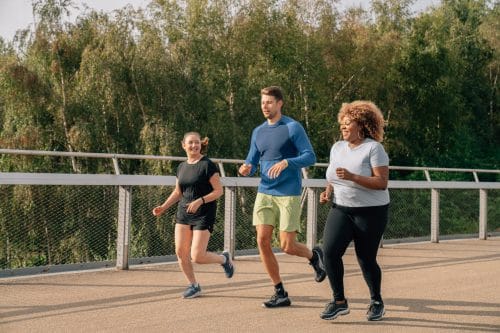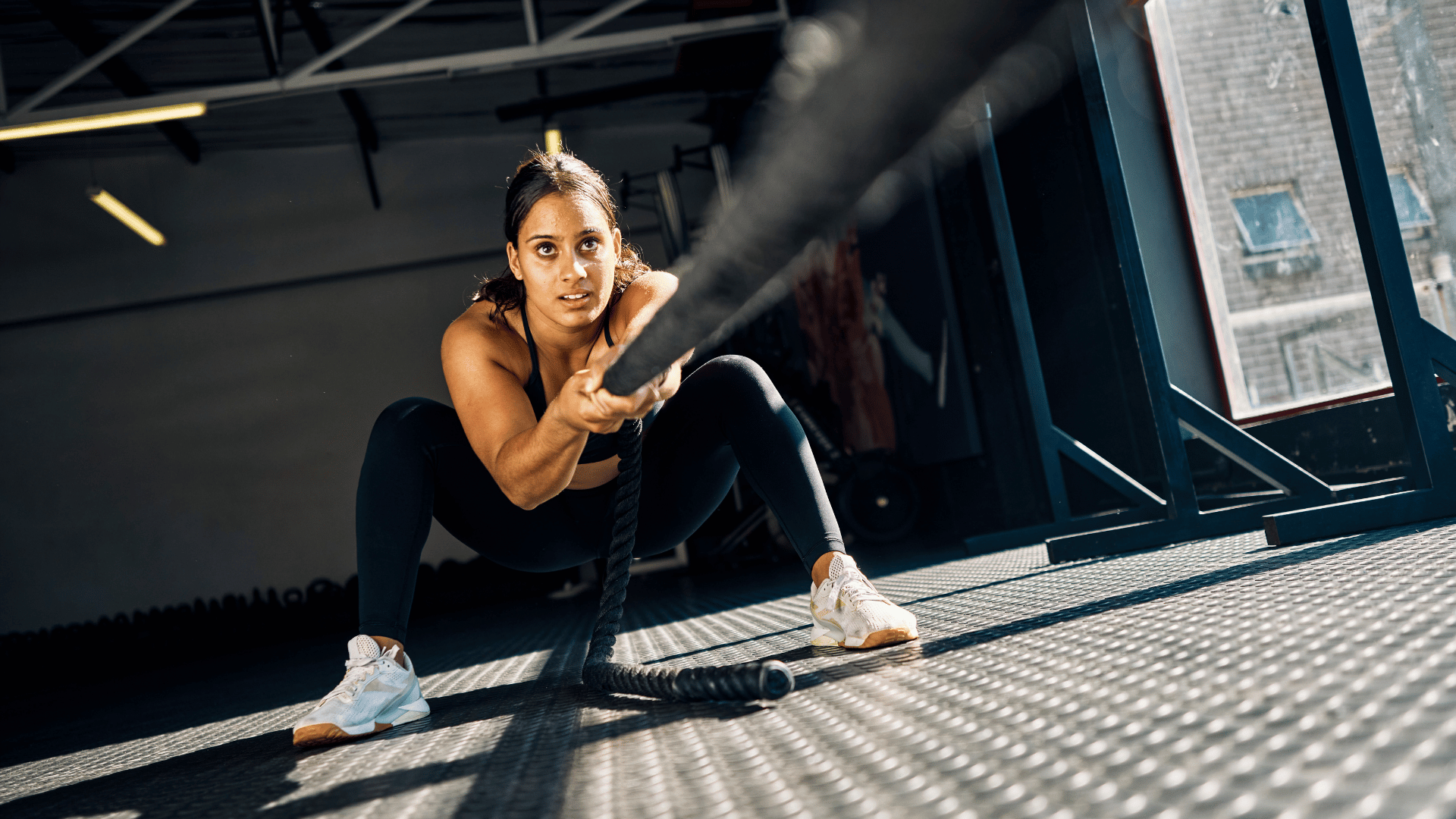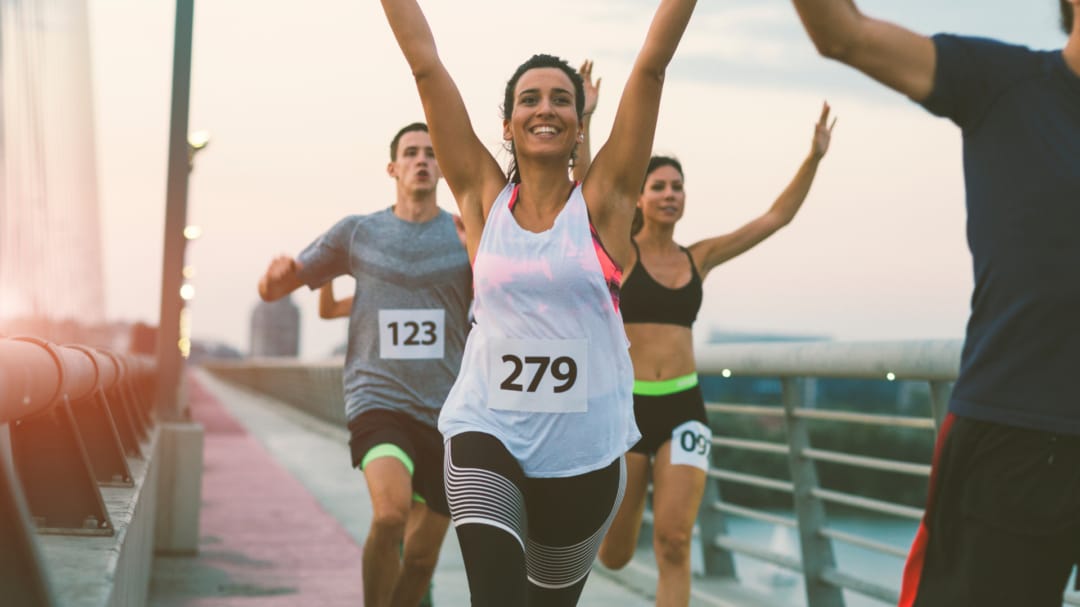Achilles Tendinopathy: Recovery Plans for Runners

Pure Sports Medicine
- 13 August, 2020
- Lower Limb
- Running
- Podiatry
- Tendinopathy
- 5 min read
Achilles Tendinopathy: Recovery Plans for Runners

Achilles Tendinopathy is an overuse soft tissue injury that affects around 9% of recreational runners, but it does not discriminate and can happen to people who don’t run or those who consider themselves not very active.
In the past, it was thought that there was a lot of inflammation involved in this injury. But we now know that there is only some inflammation, which is why the term ‘tendinopathy’ is used instead of ‘tendonitis’.
The tell tale signs and symptoms of Achilles Tendinopathy are, by pain along the tendon or at where it connects to the heel bone (insertion on the calcaneus), and pain when taking the first few steps in the morning, after sitting or at the start of a run. Symptoms can often subside once you’re feeling more warmed up, but they can come back if too much time is spent running, or putting weight on or through the foot and ankle.
Achilles Tendinopathy can be a frustrating condition to have and those who have experienced it or currently have it will appreciate how stubborn it can be! But don’t worry, there are things you can do. Firstly however, we need delve in to the details and find out what it is.
What is the Achilles Tendon and what does it do?
The calf is made up of three muscles: the gastrocnemius, soleus and the plantaris. These muscles all connect and become one, eventually reaching the heel bone and forming the Achilles Tendon, the largest and strongest tendon in the human body.
It is around 15cm long and remarkably can absorb around 3-4 times of your bodyweight in force whilst walking alone, and up to 6-8 times bodyweight whilst running. So as you can see it needs to be a substantially strong and durable area of your body.
Additionally, it plays an interesting and quite complex role in running. During the ‘early stance phase’, when the foot makes contact with the ground, the calf muscles and Achilles lengthen, similar to an elastic band being stretched.
This is also known as eccentrically loading, meaning that it is lengthening under load or weight to then come back to its starting position. An example of this is if you come down slower from a pull up position. Whilst it is lengthening, the tendon stores energy from contact with the ground (ground reaction force), which it then uses when you push off the ground again.
Then during the ‘terminal stance’ or ‘push off’, the Achilles and calf very quickly shorten – or concentrically contract. This time think of a spring recoiling, and it uses the energy from the previous ‘early stance phase’ to help with driving forward.
When the Achilles is unable to lengthen and shorten because of poor muscle control, for example, overload injuries such as Achilles tendinopathy can soon develop.
The most common areas of the Achilles tendon for pain or issues to happen are: the mid-portion – the area roughly at the level of the two ankle bones (the lateral and medial malleoli), or the insertional – the area where the tendon attaches on to the heel bone (calcaneus).
Risk factors
On a day to day basis, tendons will typically undergo a process of wear and repair, depending on how much we use them. When the wearing process exceeds the tendon’s ability to repair, we experience ‘overload’ and this is when changes in the tendon can happen at a cellular level, leading to pain and dysfunction.
Whilst every individual is capable of developing an injury, research tells us there are internal and external risk factors related to developing tendinopathy.
Internal Risk Factors
Internal risk factors relate to those that are inside the body, and include things such as age, obesity, gender, previous tendinopathy condition or injury, diabetes, certain antibiotic or steroid medications, lower limb strength, poor ankle mobility and foot biomechanics.
External Risk Factors
External risk factors are those outside the body, and can include footwear or sudden changes in training patterns, for example an increase in the intensity or frequency of an activity.
Both internal and external risk factors can influence the wear and repair process of a tendon and therefore must be thought about when creating and following an exercise programme relevant for you.
How to manage Achilles Tendinopathy
We know there is no exact recipe for a speedy and successful recovery, so management needs to be individualised.
In the early stages of an Achilles Tendinopathy injury, a temporary reduction in training can often help to settle an irritated and painful tendon. Whilst complete rest is not advised, modifying training routines, to offload the tendon, are often advised by treating clinicians. For example, this could include simple changes, like low impact cross-training using a bike or rowing machine instead of running. Additionally, for pain relief, non-steroidal anti-inflammatory medications are often prescribed.
Footwear is also an important factor to consider. Shoes with a slightly higher heel stack (the amount of material between your foot and the ground), or inserting a temporary heel raise can often provide relief as they allow for less weight to be put through the tendon. A Podiatrist is the healthcare professional to see in these instances as they can advice on footwear or orthotics (specific shoe insoles) to help you keep running and active whilst recovering from Achilles tendinopathy.
Towards the middle to late stage of your rehabilitation journey, an exercise programme that includes strength and flexibility exercises should be introduced by your Physiotherapist. This aims to gradually re-introduce load and weight to the Achilles tendon, and therefore increase the tendon’s ability to safely perform in the way it could pre-injury.
Many people are often delighted to hear that they can still run whilst managing this problem, though finding the right balance of exercise is key.
When creating treatment plans for Achilles tendinopathy, we typically prescribe a 12 week programme of eccentric based exercises or gym based resistance training as both forms of exercise have been shown to be very successful in treating Achilles tendinopathy.
This 12 week exercise programme is also often supported by an ongoing analysis of your running form, and towards the end of the 12 weeks of strength training, we may suggest introducing some plyometric training, which include exercises that require the muscles to exert the maximum force in a very short space of time. These would likely be prescribed by and performed under the guidance of a Strength and Conditioning coach. These type of exercises focus on the ability of our muscles and tendons to very quickly transition from the lengthened and shortened positions which are essential for running.
There are of course some occasions when exercise based intervention alone isn’t enough, in which case a Sport, Exercise & Musculoskeletal Medicine (SEM) Consultant can discuss some of the other options available to you, such as shockwave therapy. Although this should always be used to support an exercise based program instead of simply replacing it.
Additionally, you might benefit from an ultrasound scan to see the damage internally. This can often be the key to an accurate diagnosis when previous treatments haven’t worked, or you have experienced pain for a long time.
Once you have spoken with a Sport & Exercise Medicine Consultant, they can direct you on the best path for you in order to recover fully and get back to running, pain and injury free.
So although Achilles tendinopathy can be a frustrating and debilitating injury, the good news is that we can help with individualised and bespoke rehabilitation programmes, and working to get you back to your previous levels of running and activity.

Advice
Over the last 20+ years our experts have helped more than 100,000 patients, but we don’t stop there. We also like to share our knowledge and insight to help people lead healthier lives, and here you will find our extensive library of advice on a variety of topics to help you do the same.
OUR ADVICE HUBS See all Advice Hubs

